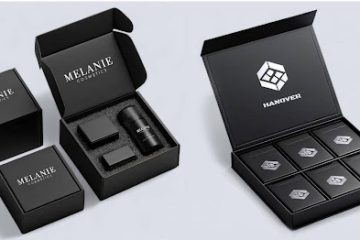In the realm of marketing and brand promotion, businesses often face the decision between traditional advertising methods and more modern, customized approaches. One comparison that arises is between customized magnets and traditional advertising techniques. Let’s delve into the strengths and effectiveness of each to determine which may be more suitable for different business objectives.
1. Reach and Visibility
Traditional advertising, such as television commercials, print ads, and billboards, often boasts a broad reach and high visibility. These mediums can reach a large audience across different demographics. However, they also come with high costs, especially for prime advertising spots.
On the other hand, customized magnets offer targeted reach and localized visibility. They can be strategically distributed to specific audiences, such as loyal customers, prospects in a particular geographic area, or attendees at events. While the reach may be narrower compared to traditional advertising, magnets can achieve a higher level of engagement within their target audience.
2. Cost-effectiveness
Customized magnets are generally more cost-effective than traditional advertising channels. Producing magnets in bulk quantities can be relatively inexpensive, especially when compared to the high costs associated with running television or radio ads, printing thousands of flyers, or renting billboard space.
Additionally, customized magnets have a longer lifespan than many traditional advertising materials. Once distributed, magnets can remain on display for months or even years, providing continuous brand exposure without ongoing expenses. This longevity contributes to their cost-effectiveness over time.
3. Tangible and Functional Value
One significant advantage of customized magnets is their tangible and functional value. Unlike traditional ads that viewers may passively consume and then forget, magnets serve a practical purpose. They can hold up important documents, shopping lists, or children’s artwork on refrigerators or other metal surfaces, ensuring repeated exposure to the brand message.
This functional aspect increases the likelihood that recipients will keep and use the magnets, prolonging their effectiveness as marketing tools. In contrast, traditional advertising materials often have a shorter lifespan and may not provide ongoing utility to the audience.
4. Engagement and Brand Recall
Customized magnets excel in fostering engagement and brand recall among recipients. Because magnets are typically placed in highly visible and frequently accessed areas, such as kitchen appliances, they become a familiar part of daily life. This constant exposure reinforces brand recognition and enhances recall when consumers are making purchasing decisions.
Traditional advertising relies on short-term impact and may require repeated exposure to achieve the same level of brand recall. However, it can still be effective for reaching a wide audience and generating initial awareness, especially for large-scale campaigns with significant budget allocations.
5. Personalization and Targeting
Customized magnets offer opportunities for personalization and targeted messaging that traditional advertising may struggle to achieve. Businesses can tailor magnet designs, messages, and offers to specific audience segments, increasing relevance and resonance. Personalized magnets can evoke emotional connections and prompt action, such as visiting a website, making a purchase, or engaging with the brand on social media.
While traditional advertising can also incorporate personalization to some extent, it may be more challenging to customize messages for each viewer or reader, especially in mass media formats.
Conclusion: Leveraging Both for Optimal Results
In the debate between customized magnets and traditional advertising, both approaches have their strengths and effectiveness depending on the marketing goals, target audience, budget, and desired outcomes. Businesses can leverage the advantages of each method strategically to achieve optimal results.
For broad brand awareness and reaching a wide audience, traditional advertising channels may be effective. However, for targeted engagement, long-term visibility, cost-effectiveness, and personalized messaging, customized magnets offer distinct advantages.
Ultimately, a well-rounded marketing strategy may combine elements of both customized magnets and traditional advertising to maximize impact and reach diverse segments of the target market. By understanding the strengths of each approach and aligning them with specific marketing objectives, businesses can create comprehensive campaigns that resonate with their audience and drive results.




